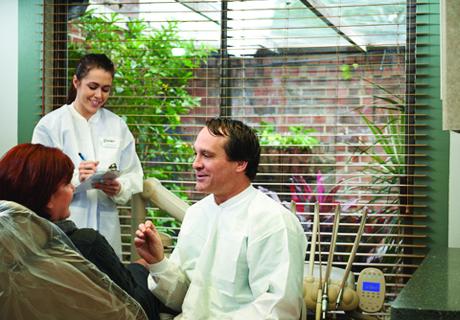How technology can shape endodontic patient case acceptance
As Dr. Garrett Morris, endodontist in New Orleans, Louisiana, explains in his interview with us, people hear the words “root canal” and immediately have negative feelings. But being an endodontist is more than that – much more.

Being an endodontist is no easy task, especially when you consider that one of the big challenges is breaking down the perception that a lot of patients have of what their visit is going to be like.
As Dr. Garrett Morris, endodontist in New Orleans, Louisiana, explains in his interview with us, people hear the words “root canal” and immediately have negative feelings. But being an endodontist is more than that – much more.
We asked Dr. Morris about being an endodontist and how technology has helped him provide the best patient experience possible.
Trending article: Why these dentists believe CEREC is the wave of the future
What appealed to you about endodontics?
When I first started dental school, oral surgery is what appealed to me the most, and it’s where I did most of my research. It wasn’t until my junior year that I started getting excited about endo. After working with my first endo patient, I remember thinking, “This is what I really want to do.” So I started helping out in the endodontic department with some of the endo residents, and fell in love with it.
I love the technical side of endodontics. You have to be extremely precise. But what I really love is the diagnostic part. When someone comes into the office, in pain, trying to figure out what’s going on, and their general dentist can’t figure out what’s happening. We’ll get referrals and they’ll say, “I just don’t know what’s going on, can you help me out with this case?” That side really appealed to me. Getting to the source of the patient’s pain.
Trending article: Announcing Dental Products Report's Top 25 Women in Dentistry for 2015
How do you focus on giving your patients, who often come into your office in pain, the best experience possible?
Well obviously they are going to be very apprehensive. They’re used to seeing their dentist. We are a new face and place for them, some people have never had a root canal before, and “root canal” has a negative connotation. So it’s all about trying to cater to them and making them as comfortable as possible. We give them blankets, water, whatever they need and just try to accommodate them as much as possible, while still being able to do our jobs.
I think having great technology and monitors in the room and being able to show them exactly what’s going on helps take away some of the fear and anxiety. It’s a matter of getting the patient on board with us.
Continue to page two for more...
You mentioned technology. What value do you think technology brings to your practice and what you tell your patients?
I think technology is extremely important. I’ll give you the example of my Sirona. When you’re trying to explain the benefits of an extraction or treatment, that technology is so invaluable. When I encounter a patient that tells me, “I want to save my tooth, I don’t care what you have to do,” I can take that image and show them how extensive things are, what exactly I need to do to try and save the tooth, and caution them that after all that, they could still lose the tooth. It completely changes their mind. The technology sells what we’re doing and makes people more comfortable.
Related reading: How Sirona's CEREC has transformed one practice
At the end of the day, when you feel like you’ve made an impact on your patients, how do you know that?
It comes through in a few ways. Sometimes, when we do a follow-up call they tell us. Sometimes it’s feedback we get from the general dentist. Sometimes, it’s just someone stopping me in public and thanking me. New Orleans is the biggest smallest town, because no matter where you go you end up knowing someone that knows someone. That’s basically how we know we’re making an impact on people – we hear it from them.
More on Patterson Dental: Innovator Profile 2015: Patterson Dental